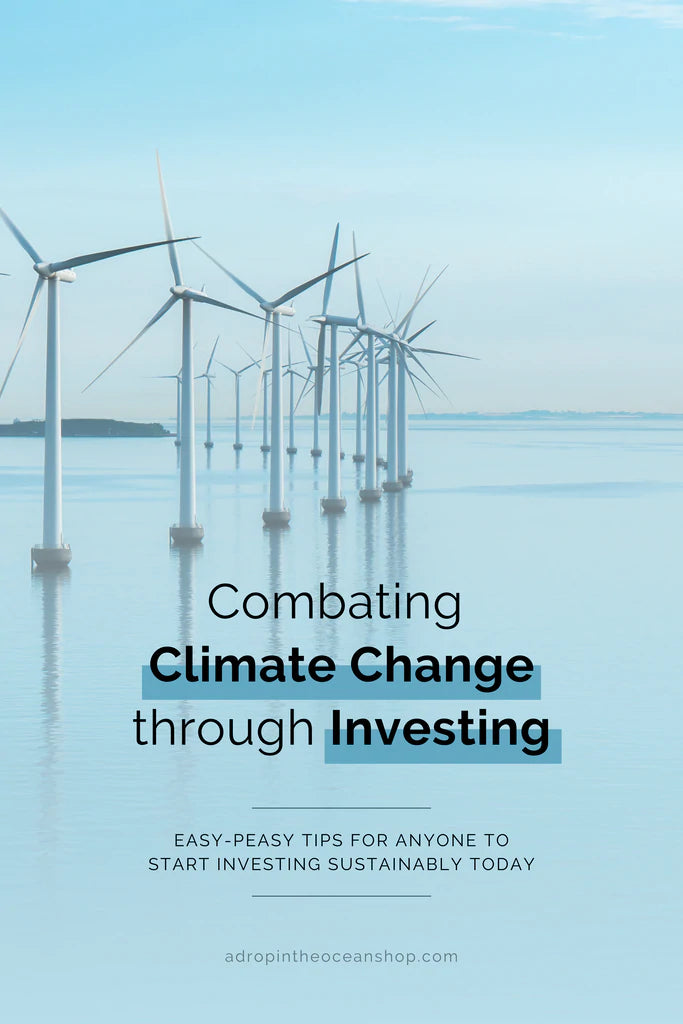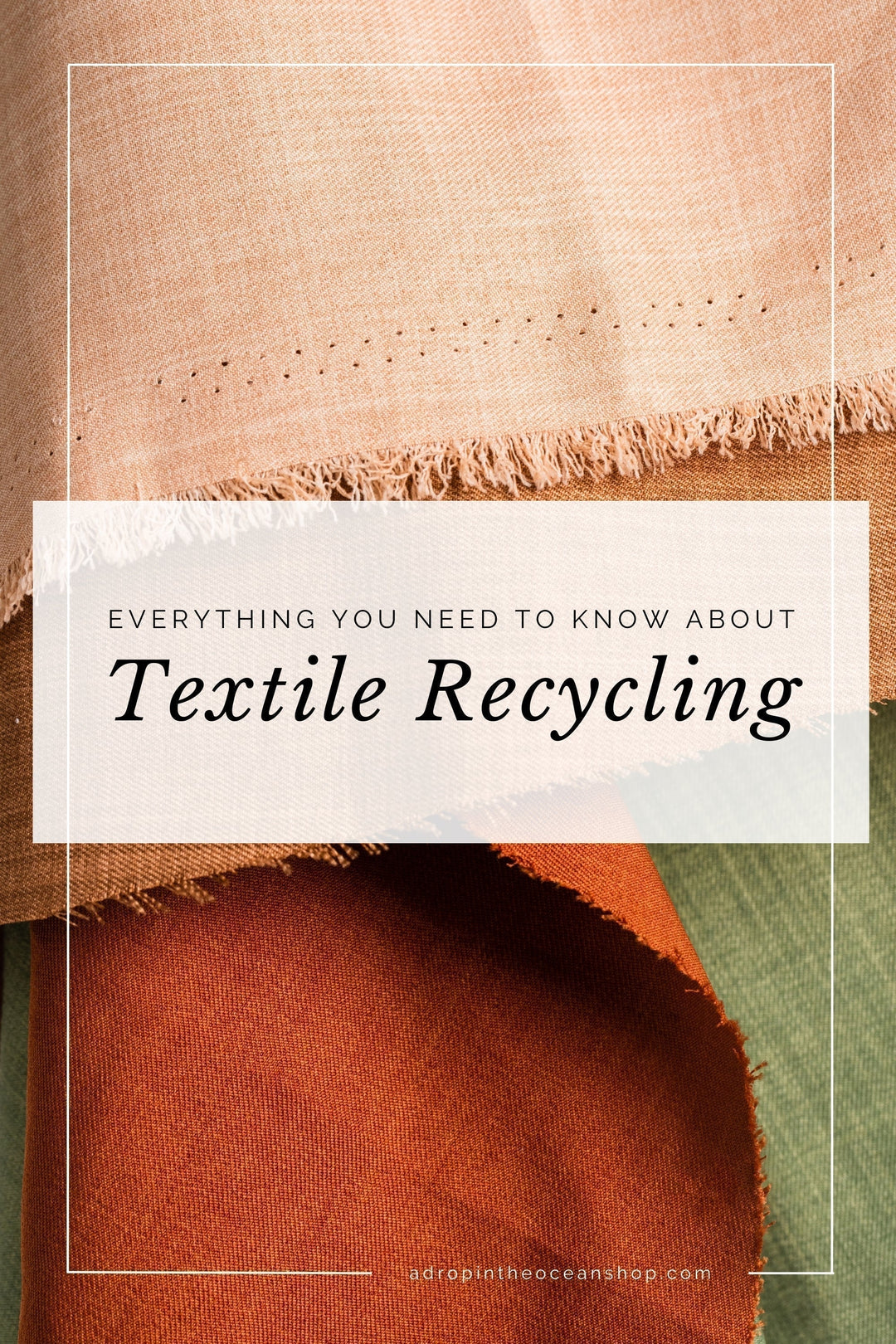How to Invest in Renewable Energy

This post first appeared in our weekly Make Waves Mondays email series on September 28, 2020.
Last edited April 17, 2023.
This year has brought the worst wildfires on record across the west coast. While the skies are blue here in Tacoma again, the impacts of these fires will remain, and continue to grow if we do not make change.
Two weeks ago, our post focused completely on these fires and how undeniably linked to climate change they are. I shared several ways we can all do our part to combat climate change, including voting, divesting from fossil fuels, and investing in renewable energy.
Today, I wanted to dig a little deeper into investing in renewables. Because investing doesn’t have to be scary or expensive - no matter your age or your financial education.
A little legal disclaimer before we go any further: I am not a financial expert. I am lucky to have had a financial education growing up from my father, who was a licensed financial consultant, and I’ve personally been investing in the ways I am about to lay out for seven years now. What follows is not prescriptive advice, but education and opinions from personal experience, and should be taken as such. I also receive no commission or any form of payment from the suggested tools and resources. I only ever promote products and services I use and believe in 100%.
The Easiest App for Sustainable Investing
Growing up, the tv in our home was more often than not rolling the stock ticker. My dad, from a very young age, encouraged me to invest.
He asked what I would invest in, based on what I used most at the time. My answer at the time was always Apple and Google. So even without having any money actually invested, I became personally invested in how these stocks were performing.
I’d walk into the living room, watch the ticker until they rolled across the screen, and happily announce “Apple’s up! Google’s up!” and bounce out of the room.
Fast forward several years and exactly zero investments later, and I discovered the app Stockpile. Traditional investing can require hundreds or thousands of dollars upfront, but Stockpile makes investing accessible - and really freaking easy.
The app lets you invest as little as $5 at a time, and with fractions of shares.
I began my investing journey with two $20 gift cards from my brother - one for Tesla and one for Google. At the time, Tesla was about $180 per share; Google was at $813. So while that $40 wasn’t much in the world of investing, it got me started.

What are ETFs and how can I use them to invest in renewable energy?
Okay, okay…so that’s easy enough. But everyone knows Tesla and Google. What about renewable energy? How do we invest in something broad like “renewable energy,” instead of a specific company?
Here’s what I’ve learned.
There are these things called ETFs. Exchange-traded funds. They’re basically little bundles of stocks with a common theme.
They’re great because you can invest in a lot of companies at once (diversification, my father likes to remind me when I get excited about positive Elon Musk news, is important ☝🏻), and instead of researching a bunch of individual companies, you can purchase one ETF that’s already done a lot of the work for you.
When I started searching for ways to invest in renewable energy, I came across two ETFs that seem to serve similar purposes, but with slightly different company lineups - the NASDAQ Clean Edge Green Energy Index (QCLN), and iShares Global Clean Energy (ICLN). These are the two that I’ve chosen to invest in, but a Google search for “clean energy ETF” will get you a ton of resources so you can do your own sleuthing, too.
(A Reddit post asking for advice on which to invest in resulted in the comment, “If you like Tesla, QCLN, if you don’t, ICLN.” I chuckled.)
Update: Since this post was originally published, I have also invested in Enphase Energy, Inc. (ENPH) and have added Invesco WilderHill Clean Energy ETF (PBW) to my watch list.
How to Get Started with Sustainable Investing
Both of these ETFs are available through Stockpile.
All you gotta do is sign up, link your bank account or buy some gift cards, transfer some money over, and get investing. It’s actually ridiculously easy.
Update: Since this post was originally published, Stockpile has converted to a monthly membership structure. There is a free 30-day trial, and is $4.95/month after the trial ends.
For example...
You transfer $100 to your Stockpile account. ICLN, as of Sunday night, is sitting at $16.80 per share. You put all $100 (minus a 99¢ trading fee) towards ICLN. You now own approximately 5.89 shares of ICLN.
Or, you choose to split that $100 between ICLN and QCLN evenly. You put $50 (minus the trading fee) towards ICLN and $50 (minus the trading fee) towards QCLN, currently sitting at $40.52. You now own approximately 2.92 shares of ICLN and 1.21 shares of QCLN.
Easy peasy, and all easily monitored from the app.
Oh and btw, a recent study by Imperial College London and the International Energy Agency showed that in the US, investments in renewables have seen returns of about 200%, compared to fossil fuels at around 97% 🤑
Always keep in mind that returns are not guaranteed, and any money invested should be money you won’t need for a long time.
As soon as I put money towards my portfolio, I consider that money “gone” for at least 10 years. Gone, but still fun to watch grow over time 😉
It’s time to take the scary out of investing! Because it can actually be quite fun if you let it - especially when we’re fighting climate change at the same time.
P.S. I asked my dad to review this post for accuracy, and he noted that ETFs are great, but they all have a fee called an "expense ratio" that gets taken out of your returns along the way. I looked into what this means, and QCLN’s expense ratio is 0.60% (meaning you’ll pay 60¢ in annual fees for every $100 you invest); ICLN’s is 0.46%. (Even I learn something from these posts!)









Leave a comment